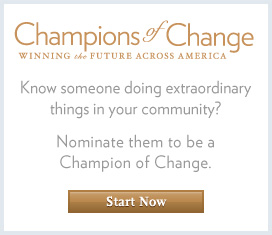Champions of Change Blog
Changing Occupant Protection Behaviors in the Hispanic Communities of Chicago and Beyond
Posted by on May 20, 2014 at 3:55 PM EDT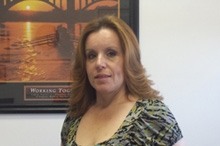
Wanda Vasquez is being honored as a Transportation Ladders of Opportunity Champion of Change.
I am honored to have been nominated and selected by the White House as a Transportation Champion of Change.
Since 1985, I have worked with non-profit community organizations. In 2004 as I began working as the Occupant Protection Coordinator for Chicago, I began educating the community on the Traffic Safety issues affecting the Chicago area. As part of my position I had to participate in a National Child Passenger Safety Certification Course. A course that took 4 days and where I was going to learn how to use car seats correctly, to then educate the community. I became a Nationally Certified Child Passenger Safety Technician (CPST) and continued to become and Certified Instructor in 2005. (NHTSA Child Passenger Safety Certification Course, www.NHTSA.gov).
I learned that traffic crashes are the leading cause of death for children age 4 and ages 11-14. I also learned Hispanic children are at a great risk for injury and death in traffic crashes because their restraint use is low. I knew this first hand, as a Hispanic Women I never used a car seat for my children. Something had to change.
I knew that we had a large amount of Hispanics migrating to the United States, specifically to the Chicagoland area, and many never used a car seat in their country. Many did not speak English, nor know about the laws in the state, and many times were afraid of the police. We had to change their behaviors, in a positive way. We needed individuals that could speak the language, understand the culture and who had a passion for safety. I began teaching the certification course and training bilingual, Hispanic advocates to educate the community on how to keep their families safe. Presentations and car seats inspection events continued to be organized and held in communities throughout the Chicagoland area and throughout the state of Illinois. Families are educated on an individual basis and are oftentimes referred to community organizations or hospitals where car seats are available for a residual fee. Individuals take advantage of these services and now are more aware of the importance of keeping their children safe. The Traffic Safety Behaviors within the Hispanic communities in Chicago has changed. Individuals are using their seat belts and using appropriate car seats for their children.
Joining Rincon Family Services as the Traffic Safety Liaison gave me the opportunity to continue educating the Hispanic community. Coordinating the IDOT Traffic Safety Resource Center and a car seat distribution program gave me to opportunity to reach individuals beyond the Chicagoland area. Educating individuals on the importance of staying safe while traveling and using car seats correctly is what I do with a passion. A passion that has driven me to Latin America to train Hispanic Advocates to educate families in their communities. I am proud to be part the growing number of Traffic Safety Advocates nationwide.
Wanda Vazquez is the IDOT Traffic Safety Liaison at Rincon Family Services.
Learn more aboutDisability Rights, U.S. Transportation Priorities, and Even Climate Change
Posted by on May 20, 2014 at 3:54 PM EDT
Marilyn Golden is being honored as a Transportation Ladders of Opportunity Champion of Change.
For over 25 years, I’ve worked on national system-change to broaden the civil rights of people with disabilities to transportation.
Pairing “disability” with the term “civil rights” may seem odd to some. The prevailing cultural attitude is that disability is personal; a medical issue. We call that “the medical model” and have worked for decades to broaden the public image of disability to take into account our relationship to society. We want everyone to understand that the prevailing heritage of isolation, segregation, and exclusion experienced by most people with disabilities in just about all human societies is not a function of our disabilities alone, but about how society treats us.
When I was growing up, segregation and exclusion of people with disabilities was legal. Segregated schools and institutions for people with disabilities had no requirement to provide options for integration. Few people could see what was happening clearly because everything was covered by the gloss of good intentions. The burden of dealing with the consequences of disability rested on the individual. Society had no responsibility to remove barriers to equality.
Leaping through the years to today, when buildings have ramps so wheelchair users can participate, when government hearings have sign language interpreters so deaf people can participate, when government programs send letters in formats blind people can use, and when schools properly accommodate all children with disabilities, the walls of prejudice and discrimination fall.
These changes did not occur because social institutions, on their own, chose to include us. They changed because a social movement, the disability rights movement, which is both profoundly original in its thinking and, simultaneously, as traditionally American as civil rights based on race and sex. In the disability rights movement, millions of ordinary men and women have asserted ourselves to demand dignity and our rights.
This movement succeeded in the 70s, 80s, and 90s to pass federal and state civil rights laws, the most famous, but far from the only one, being the Americans with Disabilities Act (ADA). These laws required the changes I named, and many others, too. They have enough teeth that historically-unwilling institutions—education, medical care, employment, housing, the commercial sphere (such as hotels, stores, and restaurants), recreation, and, of course, transportation—all made, literally, concrete changes to become inclusive.
This struggle is far from over. Too much health care remains inaccessible to people with disabilities; too many people are still institutionalized; and, in transportation, while much has changed, many battles remain. Many people in this movement spend long work days, weeks, and years to realize full equality. It is my true privilege and honor to work among them.
Lastly, let me point out that our movement’s struggles occur in a broad context of inequitable funding that forms the backdrop to our, and to all, discussions of public transportation in this country. The United States dedicates enormous amounts of funding to infrastructure and other functions that facilitate transport by automobile – $48 billion is proposed by US DOT for 2015, but only $17 billion for public transit.
These priorities inherently disfavor large sections of the population, including people with disabilities. All the wonderful public and private transit programs, no matter how well they implement the ADA, cannot truly fill this gap. Our country must stop neglecting adequate support for publicly funded transit; privately funded transit; and resources to make our streets, sidewalks, and the pedestrian environment work well—for travelers with disabilities and all transit-dependent populations, including people who can’t afford cars.
Moreover, spending on autos does not decrease climate change, another critical national priority for everyone; but spending on public transit can.
Marilyn Golden is the Senior Policy Analyst at Disability Rights Education & Defense Fund (DREDF).
Learn more aboutChampioning Diversity in the Transportation Industry
Posted by on May 20, 2014 at 3:51 PM EDT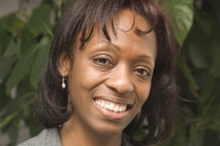
Greer Johnson Gillis is being honored as a Transportation Ladders of Opportunity Champion of Change.
I fell in love with the infrastructure and the complex system of roads and bridges of Interstate 285 and the “Spaghetti Junction” interchange of I-285 and I-85 as a teenager traveling to Atlanta for the first time. I began to dream about how that interchange was built, and I knew my destiny would be in transportation engineering.
Although I was prepared academically for an engineering career, nothing prepared me for the challenges that I would face as a female and a minority in the engineering industry. After attending predominately white colleges in the late 1980s and early 1990s, I had become used to being the only female in my engineering classes, and in some cases, the only African-American in the room. Today, I sometimes still find myself being the only woman in a meeting to discuss an engineering project, or the only minority in a room full of consultants, or the only female minority in a meeting with my clients. But I have seen many positive changes in my industry, and I am proud to have contributed to making those changes.
Early in my career, I became involved with Women’s Transportation Seminar International (WTS) and Conference of Minority Transportation Officials (COMTO), which aim to increase the participation for women and minorities in our industry by providing mentoring opportunities, scholarships for students, and leadership training, among other strategies. By means of these organizations, I work to mentor and to provide opportunities for our next generation of transportation leaders.
In my work, I’ve had several opportunities to increase participation of women and minorities in our industry by providing access, training, and being a champion for others. I participate in USDOT’s Office of Small and Disadvantaged Business Utilization (OSDBU) Mentor-Protégé Program. I mentor a small, women-owned business, Symmetra Design, a transportation and traffic engineering firm in Washington, DC. When the owner, Nicole White, approached me to join her in the program and help expand her business, I jumped at the chance to help her stratgize! We meet regularly with OSDBU representatives to discuss how we can maximize her success in the federal markets. We are helping Nicole develop a strong marketing program. We’ve partnered with her on several major pursuits and projects, including a study of speed cameras in the District of Columbia. I also mentor another Washington, DC-based DBE (disadvantaged business enterprise) firm, Cube Root Corporation. We have partnered on many successful projects and pursuits and are helping the owner to develop a strong quality assurance plan for his small company. Our clients see the value of these partnerships—having diverse thoughts in collaborative forums helps us achieve sound resolution of our clients’ challenges. Our clients appreciate that we are giving back to our community by mentoring these firms.
I continue to see successes every day. In March of this year, I had the pleasure of chairing COMTO’s Celebrating Women who Move the Nation Awards program, which honored 11 phenomenal women who had changed the face of the transportation industry across all modes. During the acceptance speeches, I looked out into the audience and saw over 500 transportation professionals sitting in the room. I was no longer the lone female or the only African-American, or the only minority in the room. My clients, my peers, my colleagues, and my role models were all in the room – representing the diverse nation that we are.
Greer Johnson Gillis, P.E., is the Area Manager for Parsons Brinckerhoff, a global engineering and construction management firm, in the Washington, D.C., metropolitan area.
Learn more aboutTransportation Drives Our Lives
Posted by on May 20, 2014 at 3:48 PM EDT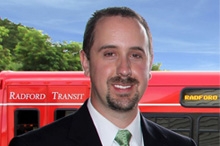
Josh Baker is being honored as a Transportation Ladders of Opportunity Champion of Change.
The way we view transportation really needs to be about the people. Often times, we are focused on the actual vehicle, the bus stop, or the clearly visible identifiers of the service. Unfortunately, what this does is allow us to lose sight of what those devices are there for. Consider that when you look at a bus driving down the road at capacity in Los Angeles, or a subway pulling into a crowded station in New York, it is easy to see how much these services are needed. But it’s not always this clear. Rural areas provide transportation operators with an entirely unique set of challenges. As human beings we really have a hard time understanding what all of the needs are and how to solve them. This sometimes results in our having trouble addressing the needs of those living in more remote or rural areas.
How then can we help everyone throughout our great country when their situations or circumstances are so different, yet so similar in importance? Well I tend to look at it simply as a puzzle, a challenge that can often take months, years, or decades to complete. The approach is simple: Take pieces that are different shapes and work to fit them in and complement each other to form a complete picture. This takes time. When you sit down to try to work out the solution, you have to examine the edges of the piece, understand their curves or sharp angles, then move them around until you find a suitable fit for them. Patience like this is a key part of ultimate success in driving change and in the advancement of transportation. Solving the puzzle is what we did in Radford. We looked at the situation, identified how it was unique and needed to go together, then sat down together to figure it out. Moments of frustration are inevitable and tension is sometimes present, but in the end the reward is priceless. When you get those pieces all snug and meshed together, well you have quite the impressive picture.
I was fortunate in this project to be part of a very special organization with an incredible and special mission: to make a difference by changing lives. New River Valley Community Services (NRVCS), as its name implies is all about community service. From the individual needing special assistance to live their life, to the person in crisis who just doesn’t see how they can go on living, NRVCS is about helping others, something easily complemented by our unique and expansive transportation services. With this background and considering the folks I work with every day, partnering with the City of Radford and Radford University to launch Radford Transit was a clear step forward in helping to succeed at our mission.
It’s easy to talk about what you do and why you do it, but it’s difficult to know where to start and where to end. With that said I will sign off with some personal thoughts to anybody who might be out there reading this. When you look at your interests, goals, and desires, always remember that with enough focus and drive you really can accomplish just about anything. That’s the beauty of the American way. We (as a nation) don’t just sit back and wait for something to come to us, we make it happen and we do it best. I’m proud to be a citizen of the United States of America and honored to have been selected as a Champion of Change. For all of us, service to our country should be first and foremost in our minds every day, enhancing lives and being a champion of change is not something isolated to one person or a small group of people… it really is in all of us.
Josh Baker is the General Manager of Radford Transit and the coordinator of all Facility and Transportation Services for New River Valley Community Services (NRVCS), a public provider of behavioral health services to residents of the New River Valley in the Commonwealth of Virginia.
Learn more aboutBecoming the Voice You Wish Had Been There for You When You Needed It
Posted by on May 20, 2014 at 3:47 PM EDT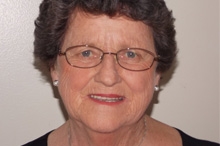
Daphne Izer is being honored as a Transportation Ladders of Opportunity Champion of Change.
When I started what quickly became a full-time job as a truck safety advocate, I never imagined being here today. I am honored to be chosen as a White House Champion of Change, and I hope that every person who worked alongside me and with Parents Against Tired Truckers (PATT) knows that they share in this award. Their support of our mission to reduce truck driver fatigue and shepherd a requirement for electronic logging devices (ELDs) through rulemaking will help to reduce truck crashes, save lives, and prevent debilitating injuries.
Truck safety advocacy is a David and Goliath-type battle. We’ve often found ourselves on the other side of issues facing industries and corporations with tremendous funds and considerable work forces. However, we learned early on that what we lack in resources we make up for with our volunteers’ and their families’ abundant heart and dedication. This transcends dollars and numbers and ensures that our voices are heard and our concerns addressed.
Twenty years ago this May, my husband Steve and I founded PATT after a truck driver fell asleep at the wheel of his 80,000-pound rig, killing four innocent teenagers and seriously, permanently injuring one more. One of those killed was our son Jeff. As a result of this horrific, preventable crash, four beautiful teenagers: Jeff, age 17; Angie, age 16; Dawn Marie, age 15; and Katie, age 14, were killed. Linda, age 15, survived but was seriously injured. Five families and a tight-knit community suffered incomparable personal loss as a result of a single tired trucker.
Steve and I were heartbroken, and our grief deepened when we learned that truck driver fatigue was a known safety issue going as far back as the 1930’s. Our grief soon turned into anger when we realized no one was there to fight for our son and other victims of truck crashes—a group that was far too many in number, on average 4,000 are killed and another 100,000 more are injured each year in truck crashes. The only way we thought we could survive our grief and anger was by taking action to make sure other families would not have to suffer a similar loss. For those that did suffer loss and injuries, we wanted to make sure that they would have the grief and support services, and information that we desperately needed, but did not have, when we tried to navigate the post-crash process by ourselves.
Unfortunately, the number of fatigue-related truck crashes is high. Our ability to reach every family that needed us quickly grew beyond the capacity of PATT, even after I went part-time in my day job as a school nurse to dedicate more hours to PATT and our work. We needed help, and a solution came along when we were given the opportunity to join forces with Citizens for Reliable and Safe Highways (CRASH) to form the Truck Safety Coalition. PATT grew from a Maine grassroots group meeting around our kitchen table to a nationally recognized organization working through the Truck Safety Coalition (TSC).
On July 6, 2012, President Obama signed into law the Moving Ahead for Progress in the 21st Century Act (MAP-21), which included a mandate for rulemaking for ELDs in all commercial vehicles. After nearly two decades advocating for a requirement for the use of ELDS, our voices were finally being heard. The ELD rule will accurately record truck driver hours behind the wheel, prevent the falsification of paper log books, reduce stopping time for review of hours of service, and as a result help to reduce truck driver fatigue and fatigue-related truck crashes.
Attaining the rule for ELDs and being recognized by the White House are tremendous but bittersweet rewards. I know that these victories will help to educate the public and lawmakers about truck safety issues and will help to keep other families whole. This is everything that I have hoped for in our work, but, it is also a reminder of how much we lost.
PATT and its partners, Citizens for Reliable and Safe Highways (CRASH) and the Truck Safety Coalition (TSC), are dedicated to reducing the number of preventable deaths and injuries caused by truck-related crashes, providing compassionate support to truck crash survivors and families of truck crash victims, and educating the public, policymakers, and media about truck safety issues.
Daphne Izer is the Founder of Parents Against Tired Truckers (PATT).
Learn more aboutFrom Activist to Scholar of Transportation and Economic Opportunity
Posted by on May 20, 2014 at 3:42 PM EDT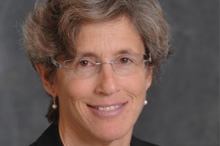
Evelyn Blumenberg is being honored as a Transportation Ladders of Opportunity Champion of Change.
I am honored to be a White House Champion of Change and join the many other impressive leaders in being recognized.
I have devoted my life’s work to alleviating poverty in the U.S. As the daughter of immigrants, I’ve seen first-hand the many obstacles families face in striving for economic mobility and stability. From an early age, I was committed to making life better for those struggling to fit in, to survive, to prosper. My early professional career included working with clients to obtain needed social services and organizing in low-income communities to effect economic policy change.
After many years of 80-hour weeks and sleeping on strangers’ couches, I returned to school at UCLA to get a Master’s degree in urban planning. My motivation was to gain a better understanding of the problems facing low-income communities and to expand my repertoire of tools needed to address these problems. UCLA’s Graduate School of Architecture and Urban Planning was the perfect home for my interests in social justice as many of the faculty and students shared similar passions and concerns. In fact, it was such a terrific home that I decided to stay on for a PhD.
My commitment to urban poverty research—and UCLA—persists. I am currently a Professor of Urban Planning in the UCLA Luskin School of Public Affairs. The concerns motivating my research are unchanged from my days as a community organizer, but today I play a different role. My teaching and research examine many dimensions of poverty and low-wage labor markets; it is through my published research and my terrific students that I seek to enable others to effectively organize for change.
Early in my research career, a colleague (Professor Paul Ong) and I examined the relationship between welfare usage and spatial access to employment opportunities. At about the same time, President Clinton signed the Personal Responsibility and Work Opportunity Reconciliation Act, reforming welfare into a time-limited program that requires welfare recipients to make rapid transitions into the labor market. Based on my earlier research, it seemed likely that access to transportation could play an important role in linking low-income women to job opportunities.
This insight prompted a series of research projects on the role of transportation in the welfare-to-work transition. Now, more than 15 years later, I continue to conduct research on the links among transportation access, employment, and poverty. Certainly, public transit is essential to the mobility of families with limited access to automobiles, particularly in cities. However, my research shows that for most low-income families, a car can be the difference between having a job or remaining unemployed. Cars enable relatively speedy travel over long distances, the ability to make intervening stops at day care centers and grocery stores, and safety when traveling at night.
My work showing the overwhelming benefits of car access for poor people has sometimes gotten me in hot water with environmentalists. I am deeply sympathetic with the efforts of many – including those in my own field of urban planning – who work tirelessly to reduce the environmental harms of car-dependence. Yet it shouldn’t surprise anyone that after a century of mostly car-focused urban and suburban development in the U.S., not having a car puts people at a considerable disadvantage – especially in suburban and outlying areas. In an era of growing income inequality, it would be unwise and unfair to pursue our environmental goals at the expense of those families who most need cars as one rung in their ladder of opportunity.
Dr. Evelyn Blumenberg is a Professor and Chair of Urban Planning at UCLA’s Luskin School of Public Affairs.
Learn more about
- &lsaquo previous
- …
- 20
- 21
- 22
- 23
- 24
- 25
- 26
- 27
- 28
- …
- next &rsaquo

